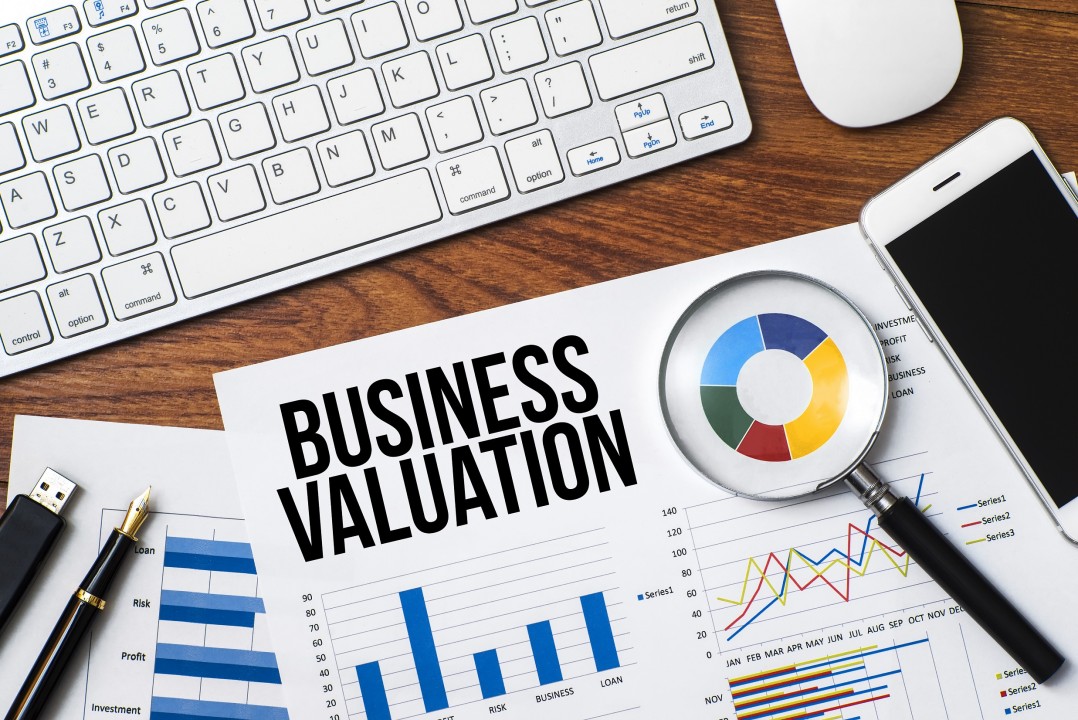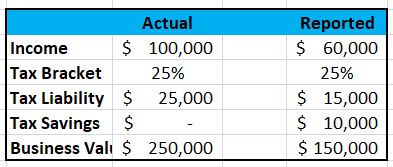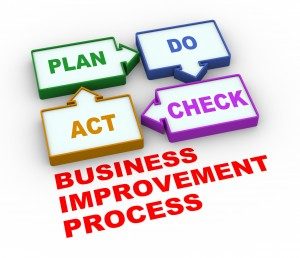Understanding financial reports is critical for any business owner. This blog post offers detailed examples, practical guidance, and clear definitions to help you create and best use your financial reports for any business. This post will focus on the most important financial statement, the income statement. This post will dive deep into how to effectively read and interpret income statements because you no longer have a way to be in business safely.
Understanding the Income Statement:
An income statement, a profit and loss statement, is pivotal in financial accounting. It provides information about your business’s profitability, presenting the revenues generated and the expenses incurred within a specific period. The difference between these two figures is known as net income or profit. As an integral component of your overall financial statements, the income statement allows you to assess your business’s performance and make informed decisions to improve. Moreover, an income statement and a well-crafted business plan hold significant weight when seeking bank financing or other lenders.
The Versatility of Income Statements:
An understanding of your income statement is essential for effective business management. Income statements serve various purposes, including:
Tracking Income and Expenses:
The fundamental function of an income statement is to track the amount of income generated compared to the costs incurred to generate that revenue. This analysis offers a deeper understanding of your business’s financial performance and unveils areas where improvements can be made.
Making Budget Forecasts:
An income statement is valuable for creating accurate budget forecasts for the upcoming year. By leveraging this statement, you can proactively plan for potential revenue streams and anticipate associated expenses and costs.
Calculating Taxes:
Tax professionals rely on the information provided in your income statement for accurate tax calculations. By furnishing detailed details on your total profits or losses, you simplify the tax filing process and ensure precision in your tax obligations. It also allows for tax strategies that can reduce tax liability.
Gauging Profitability:
An income statement provides key insights into your business’s profitability over a specific period. By comparing total revenues against total expenses, you gain valuable information that can drive strategic changes to enhance profitability in the future.
Assessing Performance:
Evaluating overall performance within your company becomes easy by analyzing an income statement. By assessing the efficiency of each operation, product, or service in generating revenues and managing costs, you can identify areas for improvement and optimize your organizational structure.
The Significance of Income Statements:
Income statements hold immense importance for business owners. Here are four compelling reasons why income statements should be prioritized:
- Measuring Performance: An income statement serves as a financial compass, providing valuable insights into your business’s performance over a specific period. By comparing total revenues against total expenses, you can assess your financial achievements and identify areas for improvement. This knowledge empowers you to make data-driven decisions that drive your business toward success.
- Assessing Growth: Income statements are pivotal in measuring your business’s growth and sustainability. By examining revenue streams, costs, and profits over a year or more, you understand your business’s health comprehensively. With this information, you can make informed decisions about product and service expansion, market diversification, and strategic investments, ensuring long-term growth and profitability.
- Reducing Risk: Effective risk management is crucial for business longevity. Income statements provide accurate data about your expenditures and revenue sources, helping you identify potential financial pitfalls. By analyzing this information, you can avoid costly mistakes, optimize resources, and make informed investment decisions. Understanding where your money is spent and which areas yield the highest returns allows you to navigate the business landscape confidently.
- Planning Ahead: Income statements are indispensable tools for proactive financial planning. You can create reliable budget forecasts for the upcoming years by providing detailed financial information. Anticipating potential costs associated with projects or investments allows you to allocate resources efficiently, capitalize on opportunities, and adapt to changing market dynamics. With a solid financial plan, you can confidently steer your business toward sustainable growth and success.
Key Components of an Income Statement:
To prepare a comprehensive income statement, it’s crucial to include the following key components:
Revenue
Revenue represents the total money earned from selling goods or services within a specific period. It encompasses product and service sales and other income sources like interest and dividends.
Cost of Goods Sold (COGS)
COGS includes expenses directly related to producing goods or providing services. These expenses include materials, labor, shipping, and production-related taxes.
Gross Profit
Gross profit is the amount remaining after subtracting COGS from total revenue. It indicates the profitability of your business once production costs have been accounted for.
Marketing, Advertising, and Promotion Expenses
These expenses cover costs associated with promoting your products or services. They encompass advertising expenses, paid search campaigns, website design and hosting, public relations services, and other promotional activities.
General and Administrative Operating Expenses
These expenses pertain to the day-to-day operations of your business. They include wages, rent, utilities, insurance premiums, legal fees, and other operational costs.
EBITDA
EBITDA represents earnings before interest, taxes, depreciation, and amortization. It offers insights into your business’s operating performance by excluding non-operating expenses.
Depreciation and Amortization Expenses
Depreciation and amortization account for the decrease in the value of long-term assets, such as equipment, buildings, and furniture. These expenses are non-cash in nature.
Operating Income or EBIT
Operating income or EBIT is calculated by subtracting total operating expenses from total revenue. It measures your business’s performance from its core operations, excluding non-operating items like depreciation and amortization.
Interest Expense
Interest expense refers to the cost of borrowing funds from lenders. It includes interest payments made on loans and other debts.
Income Tax Expense
The income tax expense represents the amount of money your business pays in taxes based on its profits. This includes federal, state, and local taxes.
Other Expenses
Other expenses encompass additional costs not part of the main components mentioned above. This category may include bad debt expenses, one-time costs, or miscellaneous expenditures.
Net Income
Net income is the final result after subtracting all operating expenses from revenue and adding any non-operating income. It indicates your business’s overall profitability and financial performance.
How to Prepare an Income Statement for Accuracy and Insight:
Preparing an income statement is a crucial aspect of managing a thriving business. It provides insights into a company’s revenue, expenses, and profitability over a specific timeframe. This comprehensive guide will walk you through preparing an income statement, explore different examples, and delve into the essential steps for analyzing and interpreting this financial statement. By the end, you’ll know to make informed decisions and drive your business toward success.
Gather Financial Data
Collect relevant financial data, including sales figures, costs, and expenses incurred during the specific period under review.
Calculate Revenues
Utilize the gathered data to calculate the total sales revenues achieved during the period.
Calculate the Cost of Goods Sold (COGS)
Determine the direct costs of producing goods or delivering customer services within the timeframe.
Calculate Gross Profit
Subtract the COGS from the Sales Revenues to obtain the Gross Profit, representing the remaining amount after covering production costs.
Calculate Selling, General, and Administrative Expenses
Evaluate expenses not directly linked to production or sales, such as rent, insurance, and office supplies, incurred during the same period.
Deduct SG&A Expenses from Gross Profit
Subtract the SG&A expenses from the Gross Profit to derive the Operating Income (also known as Operating Profit).
Add Interest Expense
Incorporate interest payments on loans taken out by the company to arrive at the Income Before Taxes (EBT).
Apply Income Tax Expenses
Calculate the taxes due based on the profits earned during the period and add the figure to the EBT to determine the Net Income.
Income Statement Examples: Understanding Different Formats
Single-step Income Statement Example:
The single-step income statement presents a consolidated view of a company’s revenues and expenses without separating them into distinct line items for operating, non-operating, or extraordinary items. This format provides a basic overview of the company’s financial performance.
Multi-step Income Statement Example:
The multi-step income statement breaks down revenues and expenses into separate line items, classifying them as operating, non-operating, or extraordinary. This format offers a more detailed view of the company’s financial performance, enabling a comprehensive analysis of each revenue and expense category.
Analyzing an Income Statement: Unveiling Insights for Decision-making
- Understand the Purpose and Structure of the Income Statement: Gain a clear understanding of its role and structure to analyze its components effectively.
- Compare the Current Income Statement to Past Statements: Perform a comparative analysis between the current annual income statement and historical statements to identify trends and changes over time.
- Analyze Each Line Item: Scrutinize each line item on the income statement, paying attention to significant deviations from previous statements. Look for factors driving these changes and assess their impact on overall performance.
- Calculate Key Financial Ratios: Compute essential financial ratios, such as gross margin and operating margin, to gain insights into significant trends and evaluate the company’s financial health over time.
- Analyze Non-Operating Items: Examine non-operating items and their influence on profits or losses during the evaluation period. Consider investments, extraordinary gains or losses, and interest income.
- Assess Profitability and Cash Flow: Use your analysis to evaluate the company’s sustainability in terms of profitability and cash flow at its current activity levels. Assess the overall financial health and determine areas for improvement.
Harnessing the Power of Technology Tools and Software Solutions
Technology tools and software solutions are pivotal when comprehending a company’s financial performance. Utilizing tools like spreadsheets, accounting software, and economic analysis tools can assist in dissecting an income statement and gaining insights into the financial health of a business. Spreadsheets enable users to manipulate data by creating balance sheets and income statements, presenting information in various formats, and facilitating the identification of trends over time. Accounting software streamlines the analysis process by automating expense tracking, invoice generation, and journal entry input. Additionally, financial analysis tools offer sophisticated charting capabilities that visually depict key financial ratios like operating margin and return on assets.
Exploring Additional Financial Reports
Delving into a company’s financial performance goes beyond examining just the income statement. Analyzing other crucial financial statements, such as the balance sheet and statement of cash flows, provides valuable insights into the overall economic situation of a business. To enhance the accuracy of your analysis and obtain a comprehensive understanding of a company’s financial standing, it is essential to research and grasp the purpose and components of a cash flow statement and a balance sheet.
Income Statement Versus Balance Sheet
The income and balance sheets are two fundamental financial statements businesses use to report their performance. The income statement presents a company’s revenues, expenses, and net profits or losses over a specified period. On the other hand, the balance sheet offers a snapshot of the company’s financial position at a specific moment, outlining its assets, liabilities, and equity. Both statements provide critical information for assessing the overall economic well-being of a business.
Utilizing Your Income Statement for Financial Planning
Developing a financial plan based on your income statement is crucial in preparing for future success. Through a thorough analysis of your income statement, you can identify opportunities to increase revenue and reduce expenses, enabling you to pinpoint areas that require improvement and manage cash flow more efficiently. Moreover, having a clear understanding of your financials before making decisions mitigates risks and ensures that your choices contribute to your business’s long-term prosperity. Financial planning is vital as it enables businesses to establish goals, track progress, and make necessary adjustments to achieve those objectives.
Final Thoughts
Comprehending your income statement is a fundamental aspect of effective business management. Familiarizing yourself with the various line items within this document, understanding their definitions, and learning how to utilize them through practical examples can empower you to make informed decisions concerning budgeting, forecasting, and long-term planning. By following this guide of small business finance tips, business owners can embark on the journey toward enhanced financial performance. If you believe it would benefit your business, consider enlisting the services of an accountant to track and report your financials accurately.
Understanding the Key Components of an Income Statement
An income statement comprises four crucial elements: revenue, expenses, gains, and losses. Revenue represents the total income generated from the sale of goods and services. On the other hand, expenses encompass the costs associated with producing those goods and services. Gains refer to increases in net assets resulting from transactions like selling investments or property, while losses represent decreases in net assets resulting from transactions like buying investments or property. The difference between revenue, expenses, gains, and losses determines the overall profit or loss of the company during the reporting period.
Exploring the Concept of a Common-Size Income Statement
A common-size income statement is a financial statement that presents all the items in an income statement as sales or total revenue percentages. This format proves helpful in comparing results across different years or companies as it enables easy comparison of each item’s size in relation to total revenue. Utilizing a common-size statement makes it simple to identify changes and trends over time, particularly in expenses such as cost of goods sold, salaries, and operating costs relative to sales or total revenue. Analysts can leverage this information to make strategic decisions based on their findings.
Understanding Different Types of Income Statements
Income statements come in various types. The most common is the single-step income statement, consolidating all expenses into a single line item. In contrast, the multiple-step income statement offers more detailed information by separating each type of expense into distinct line items. This type of income statement aids in pinpointing areas where cost-cutting can be implemented or analyzing trends over time. Additionally, a common-size income statement presents all line items as percentages, facilitating convenient comparison of financial results between different years or companies.
Grasping the Income Statement Formula
The income statement formula is utilized to calculate the net income or net loss of a business. It involves deducting total expenses from total revenues. Total revenues encompass all sources of income, while total expenses consist of operating and non-operating costs. Operating expenses are directly related to the business’s operations, such as the cost of goods sold, wages, and taxes. On the other hand, non-operating expenses are unrelated to the business’s operations, including interest expenses or gains and losses on investments. The result is either a positive net income or a harmful net loss, which is then reported on the income statement.
Differentiating Operating Revenue from Non-Operating Revenue
Operating revenue refers to the income generated by a business’s core activities, such as the sales of goods or services. Non-operating revenue, on the other hand, represents income that is not directly related to the business’s day-to-day operations. This category includes items like interest income and gains on investments. Understanding the distinction between operating and non-operating revenue and a comprehensive understanding of a business’s financial status is essential for tax purposes. Operating revenue is typically subject to most taxes, while non-operating revenue may be excluded from taxable income under specific circumstances. Accurate knowledge of the earnings in each category can assist in managing and optimizing financial performance.
Key Insights to Look for in an Income Statement
An income statement is a crucial financial document that offers valuable insights into the overall economic health of a business. It presents both revenues and expenses to provide a comprehensive view of net income or loss. When analyzing an income statement, consider key metrics such as total revenue, expenses, gross profit, and operating margin. Additionally, understanding the percentage of total revenue allocated to each expense category can provide insights into the company’s cost structure. By comprehending these essential metrics, you can assess the business’s profitability and make informed decisions regarding its future operations. A net worth calculator can also provide valuable insights into the business’s financial well-being.[/wr_column]][wr_text]Understanding financial reports is critical for any business owner. This blog post offers detailed examples, practical guidance, and clear definitions to help you create and best use your financial reports for your business. This post will cover what information should be included in your income statement, how to effectively read and interpret it, and get actionable strategies for future use.
Understanding the Income Statement:
An income statement, a profit and loss statement, is pivotal in financial accounting. It provides information about your business’s profitability, presenting the revenues generated and the expenses incurred within a specific period. The difference between these two figures is known as net income or profit. As an integral component of your overall financial statements, the income statement allows you to assess your business’s performance and make informed decisions to improve. Moreover, an income statement and a well-crafted business plan hold significant weight when seeking bank financing or other lenders.
The Versatility of Income Statements:
An understanding of your income statement is essential for effective business management. Income statements serve various purposes, including:
Tracking Income and Expenses:
The fundamental function of an income statement is to track the amount of income generated compared to the costs incurred to generate that revenue. This analysis offers a deeper understanding of your business’s financial performance and unveils areas where improvements can be made.
Making Budget Forecasts:
An income statement is valuable for creating accurate budget forecasts for the upcoming year. By leveraging this statement, you can proactively plan for potential revenue streams and anticipate associated expenses and costs.
Calculating Taxes:
Tax professionals rely on the information provided in your income statement for accurate tax calculations. By furnishing detailed details on your total profits or losses, you simplify the tax filing process and ensure precision in your tax obligations. It also allows for tax strategies that can reduce tax liability.
Gauging Profitability:
An income statement provides key insights into your business’s profitability over a specific period. By comparing total revenues against total expenses, you gain valuable information that can drive strategic changes to enhance profitability in the future.
Assessing Performance:
Evaluating overall performance within your company becomes easy by analyzing an income statement. By assessing the efficiency of each operation, product, or service in generating revenues and managing costs, you can identify areas for improvement and optimize your organizational structure.
The Significance of Income Statements:
Income statements hold immense importance for business owners. Here are four compelling reasons why income statements should be prioritized:
- Measuring Performance: An income statement serves as a financial compass, providing valuable insights into your business’s performance over a specific period. By comparing total revenues against total expenses, you can assess your financial achievements and identify areas for improvement. This knowledge empowers you to make data-driven decisions that drive your business toward success.
- Assessing Growth: Income statements are pivotal in measuring your business’s growth and sustainability. By examining revenue streams, costs, and profits over a year or more, you understand your business’s health comprehensively. With this information, you can make informed decisions about product and service expansion, market diversification, and strategic investments, ensuring long-term growth and profitability.
- Reducing Risk: Effective risk management is crucial for business longevity. Income statements provide accurate data about your expenditures and revenue sources, helping you identify potential financial pitfalls. By analyzing this information, you can avoid costly mistakes, optimize resources, and make informed investment decisions. Understanding where your money is spent and which areas yield the highest returns allows you to navigate the business landscape confidently.
- Planning Ahead: Income statements are indispensable tools for proactive financial planning. You can create reliable budget forecasts for the upcoming years by providing detailed financial information. Anticipating potential costs associated with projects or investments allows you to allocate resources efficiently, capitalize on opportunities, and adapt to changing market dynamics. With a solid financial plan, you can confidently steer your business toward sustainable growth and success.
Key Components of an Income Statement:
To prepare a comprehensive income statement, it’s crucial to include the following key components:
Revenue
Revenue represents the total money earned from selling goods or services within a specific period. It encompasses product and service sales and other income sources like interest and dividends.
Cost of Goods Sold (COGS)
COGS includes expenses directly related to producing goods or providing services. These expenses include materials, labor, shipping, and production-related taxes.
Gross Profit
Gross profit is the amount remaining after subtracting COGS from total revenue. It indicates the profitability of your business once production costs have been accounted for.
Marketing, Advertising, and Promotion Expenses
These expenses cover costs associated with promoting your products or services. They encompass advertising expenses, paid search campaigns, website design and hosting, public relations services, and other promotional activities.
General and Administrative Operating Expenses
These expenses pertain to the day-to-day operations of your business. They include wages, rent, utilities, insurance premiums, legal fees, and other operational costs.
EBITDA
EBITDA represents earnings before interest, taxes, depreciation, and amortization. It offers insights into your business’s operating performance by excluding non-operating expenses.
Depreciation and Amortization Expenses
Depreciation and amortization account for the decrease in the value of long-term assets, such as equipment, buildings, and furniture. These expenses are non-cash in nature.
Operating Income or EBIT
Operating income or EBIT is calculated by subtracting total operating expenses from total revenue. It measures your business’s performance from its core operations, excluding non-operating items like depreciation and amortization.
Interest Expense
Interest expense refers to the cost of borrowing funds from lenders. It includes interest payments made on loans and other debts.
Income Tax Expense
The income tax expense represents the amount of money your business pays in taxes based on its profits. This includes federal, state, and local taxes.
Other Expenses
Other expenses encompass additional costs not part of the main components mentioned above. This category may include bad debt expenses, one-time costs, or miscellaneous expenditures.
Net Income
Net income is the final result after subtracting all operating expenses from revenue and adding any non-operating income. It indicates your business’s overall profitability and financial performance.
How to Prepare an Income Statement for Accuracy and Insight:
Preparing an income statement is a crucial aspect of managing a thriving business. It provides insights into a company’s revenue, expenses, and profitability over a specific timeframe. This comprehensive guide will walk you through preparing an income statement, explore different examples, and delve into the essential steps for analyzing and interpreting this financial statement. By the end, you’ll know to make informed decisions and drive your business toward success.
Gather Financial Data
Collect relevant financial data, including sales figures, costs, and expenses incurred during the specific period under review.
Calculate Revenues
Utilize the gathered data to calculate the total sales revenues achieved during the period.
Calculate the Cost of Goods Sold (COGS)
Determine the direct costs of producing goods or delivering customer services within the timeframe.
Calculate Gross Profit
Subtract the COGS from the Sales Revenues to obtain the Gross Profit, representing the remaining amount after covering production costs.
Calculate Selling, General, and Administrative Expenses
Evaluate expenses not directly linked to production or sales, such as rent, insurance, and office supplies, incurred during the same period.
Deduct SG&A Expenses from Gross Profit
Subtract the SG&A expenses from the Gross Profit to derive the Operating Income (also known as Operating Profit).
Add Interest Expense
Incorporate interest payments on loans taken out by the company to arrive at the Income Before Taxes (EBT).
Apply Income Tax Expenses
Calculate the taxes due based on the profits earned during the period and add the figure to the EBT to determine the Net Income.
Income Statement Examples: Understanding Different Formats
Single-step Income Statement Example:
The single-step income statement presents a consolidated view of a company’s revenues and expenses without separating them into distinct line items for operating, non-operating, or extraordinary items. This format provides a basic overview of the company’s financial performance.
Multi-step Income Statement Example:
The multi-step income statement breaks down revenues and expenses into separate line items, classifying them as operating, non-operating, or extraordinary. This format offers a more detailed view of the company’s financial performance, enabling a comprehensive analysis of each revenue and expense category.
Analyzing an Income Statement: Unveiling Insights for Decision-making
- Understand the Purpose and Structure of the Income Statement: Gain a clear understanding of its role and structure to analyze its components effectively.
- Compare the Current Income Statement to Past Statements: Perform a comparative analysis between the current annual income statement and historical statements to identify trends and changes over time.
- Analyze Each Line Item: Scrutinize each line item on the income statement, paying attention to significant deviations from previous statements. Look for factors driving these changes and assess their impact on overall performance.
- Calculate Key Financial Ratios: Compute essential financial ratios, such as gross margin and operating margin, to gain insights into significant trends and evaluate the company’s financial health over time.
- Analyze Non-Operating Items: Examine non-operating items and their influence on profits or losses during the evaluation period. Consider investments, extraordinary gains or losses, and interest income.
- Assess Profitability and Cash Flow: Use your analysis to evaluate the company’s sustainability in terms of profitability and cash flow at its current activity levels. Assess the overall financial health and determine areas for improvement.
Harnessing the Power of Technology Tools and Software Solutions
Technology tools and software solutions are pivotal when comprehending a company’s financial performance. Utilizing tools like spreadsheets, accounting software, and economic analysis tools can assist in dissecting an income statement and gaining insights into the financial health of a business. Spreadsheets enable users to manipulate data by creating balance sheets and income statements, presenting information in various formats, and facilitating the identification of trends over time. Accounting software streamlines the analysis process by automating expense tracking, invoice generation, and journal entry input. Additionally, financial analysis tools offer sophisticated charting capabilities that visually depict key financial ratios like operating margin and return on assets.
Exploring Additional Financial Reports
Delving into a company’s financial performance goes beyond examining just the income statement. Analyzing other crucial financial statements, such as the balance sheet and statement of cash flows, provides valuable insights into the overall economic situation of a business. To enhance the accuracy of your analysis and obtain a comprehensive understanding of a company’s financial standing, it is essential to research and grasp the purpose and components of a cash flow statement and a balance sheet.
Income Statement Versus Balance Sheet
The income and balance sheets are two fundamental financial statements businesses use to report their performance. The income statement presents a company’s revenues, expenses, and net profits or losses over a specified period. On the other hand, the balance sheet offers a snapshot of the company’s financial position at a specific moment, outlining its assets, liabilities, and equity. Both statements provide critical information for assessing the overall economic well-being of a business.
Utilizing Your Income Statement for Financial Planning
Developing a financial plan based on your income statement is crucial in preparing for future success. Through a thorough analysis of your income statement, you can identify opportunities to increase revenue and reduce expenses, enabling you to pinpoint areas that require improvement and manage cash flow more efficiently. Moreover, having a clear understanding of your financials before making decisions mitigates risks and ensures that your choices contribute to your business’s long-term prosperity. Financial planning is vital as it enables businesses to establish goals, track progress, and make necessary adjustments to achieve those objectives.
Final Thoughts
Comprehending your income statement is a fundamental aspect of effective business management. Familiarizing yourself with the various line items within this document, understanding their definitions, and learning how to utilize them through practical examples can empower you to make informed decisions concerning budgeting, forecasting, and long-term planning. By following this guide of small business finance tips, business owners can embark on the journey toward enhanced financial performance. If you believe it would benefit your business, consider enlisting the services of an accountant to track and report your financials accurately.
Understanding the Key Components of an Income Statement
An income statement comprises four crucial elements: revenue, expenses, gains, and losses. Revenue represents the total income generated from the sale of goods and services. On the other hand, expenses encompass the costs associated with producing those goods and services. Gains refer to increases in net assets resulting from transactions like selling investments or property, while losses represent decreases in net assets resulting from transactions like buying investments or property. The difference between revenue, expenses, gains, and losses determines the overall profit or loss of the company during the reporting period.
Exploring the Concept of a Common-Size Income Statement
A common-size income statement is a financial statement that presents all the items in an income statement as sales or total revenue percentages. This format proves helpful in comparing results across different years or companies as it enables easy comparison of each item’s size in relation to total revenue. Utilizing a common-size statement makes it simple to identify changes and trends over time, particularly in expenses such as cost of goods sold, salaries, and operating costs relative to sales or total revenue. Analysts can leverage this information to make strategic decisions based on their findings.
Understanding Different Types of Income Statements
Income statements come in various types. The most common is the single-step income statement, consolidating all expenses into a single line item. In contrast, the multiple-step income statement offers more detailed information by separating each type of expense into distinct line items. This type of income statement aids in pinpointing areas where cost-cutting can be implemented or analyzing trends over time. Additionally, a common-size income statement presents all line items as percentages, facilitating convenient comparison of financial results between different years or companies.
Grasping the Income Statement Formula
The income statement formula is utilized to calculate the net income or net loss of a business. It involves deducting total expenses from total revenues. Total revenues encompass all sources of income, while total expenses consist of operating and non-operating costs. Operating expenses are directly related to the business’s operations, such as the cost of goods sold, wages, and taxes. On the other hand, non-operating expenses are unrelated to the business’s operations, including interest expenses or gains and losses on investments. The result is either a positive net income or a harmful net loss, which is then reported on the income statement.
Differentiating Operating Revenue from Non-Operating Revenue
Operating revenue refers to the income generated by a business’s core activities, such as the sales of goods or services. Non-operating revenue, on the other hand, represents income that is not directly related to the business’s day-to-day operations. This category includes items like interest income and gains on investments. Understanding the distinction between operating and non-operating revenue and a comprehensive understanding of a business’s financial status is essential for tax purposes. Operating revenue is typically subject to most taxes, while non-operating revenue may be excluded from taxable income under specific circumstances. Accurate knowledge of the earnings in each category can assist in managing and optimizing financial performance.
Key Insights to Look for in an Income Statement
An income statement is a crucial financial document that offers valuable insights into the overall economic health of a business. It presents both revenues and expenses to provide a comprehensive view of net income or loss. When analyzing an income statement, consider key metrics such as total revenue, expenses, gross profit, and operating margin. Additionally, understanding the percentage of total revenue allocated to each expense category can provide insights into the company’s cost structure. By comprehending these essential metrics, you can assess the business’s profitability and make informed decisions regarding its future operations. A net worth calculator can also provide valuable insights into the business’s financial well-being.[/wr_text][/wr_column][/wr_row]















